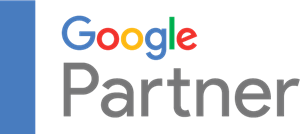Want to make money running Google Ads campaigns for clients? Multiple Google Ads accounts are most conveniently managed from Google Ads Manager. I have collected in one place everything you should know about such an account to start with, but if you have any doubts or difficulties – just contact me.
How does the Google Ads manager account work?
Google Ads Manager is mainly useful for agencies and freelancers who create and optimize campaigns for their clients. It is also used by advertisers using more than one Google Ads account. A maximum of 20 Google Ads accounts can be assigned to one email address, so if you want to run more of them – you need to create a Google Ads Manager account. You will also need it if you want to bill for advertising on a monthly invoicing basis.
Bądź na bieżąco ze zmianami w Google Ads!
Zapisz się do newslettera
Google Account Manager is a separate, master account to which you can connect existing and new Google Ads accounts, and even other Google Ads Manager accounts. You can always disconnect the connected account, too.
If you have access to the client’s campaigns via the manager, you can edit campaigns and monitor the effectiveness of ads. The customer can also assign you owner rights.
Creating a Google Ads Manager account step by step
Want to manage all of your multiple Google Ads accounts in one place? If so, for starters, go to Google Ads Manager . On the home page, select Create manager account. You can use the same email address for a maximum of 20 accounts (including manager’s accounts), if you exceed the limit – you will no longer register for this email. If you are logged into your Google account – Google will automatically try to set up an account for your email.
Then choose the name of your account, e.g. company name, first and last name – this is what customers will see. You also need to choose how you intend to use the manager: to manage your own accounts or the accounts of others. You also need to select basic information, such as the country, time zone and the currency you will use for billing.
Then click View your account – you can start using the manager.
The newly created Google Ads manager account is empty, so you need to connect the accounts you maintain to it. All you have to do is paste the customer account IDs (one per line) in the Link Other Accounts section (optional), and then click Done.
How to use Google account manager?
The manager’s account offers quite a few possibilities that are worth exploring. There are 4 main sections available here.
Overview
As with the usual Google Ads account, here you will find a summary of the effectiveness of your clients’ campaigns. You can look at three different cards here:
- Accounts – here you will find the 5 least and most effective accounts.
- Devices – you will compare the effectiveness for different types of devices.
- Day and time – you’ll see how the day of the week and time of day affect the effectiveness of the campaign.
Recommendations
Recommendations for all accounts appear in one place. If your campaigns are new, it’s possible that you don’t have any recommendations yet – they will appear in time. Recommendations will remind you of Google Ads best practices to increase your CTR or make better use of your budget. Tips can include adding explanatory text to ads or removing unnecessary keywords.
Gotowy na rozwój?
Accounts
From the Accounts section, you can go, among other things. to the Effectiveness, Budgets and Notifications tabs.
In Effectiveness, you can mainly check the average cost, average CPC or number of clicks.
A useful section is Budgets, as you can control the finances of the accounts you manage in one place. The top segment contains information on exhausted budgets and incomplete configurations – it’s worth checking this to avoid campaign interruptions. You can also view other important information here such as:
- Account budget – the spending limit for a customer’s account,
- Remaining account budget – the amount you have left to spend from the customer’s budget,
- Total daily budgets – the sum of daily budgets in all active campaigns,
- Budget status – incomplete (the budget is incomplete or the payment configuration has not been completed), exhausted (the budget exhausted before the end date), completed (the budget became inactive on the end date), future (the budget will become active on the start date).
In Notifications, you will find in one place the most important information about your supported accounts. The notifications are primarily related to:
- Payments (rejection or expiration of credit/debit card),
- Keywords and ads (rejected ads, keywords with low effectiveness),
- Campaigns (campaigns completed or nearing completion),
- Budget (end of validity or budget exhaustion),
- Accounts (e.g., accounts that are inactive due to incomplete information).
Campaigns
In the Campaigns section, you can not only track active campaigns and make changes to them, but also create new campaigns. Here it is possible to change the status (active, paused, deleted), budget and names of existing campaigns. Remember, however, that copying and pasting ads or choosing a rate-setting strategy are available in an individual Google Ads account.
Having trouble with your manager account? Contact me – I will suggest what you should do to manage customer accounts more easily.


















